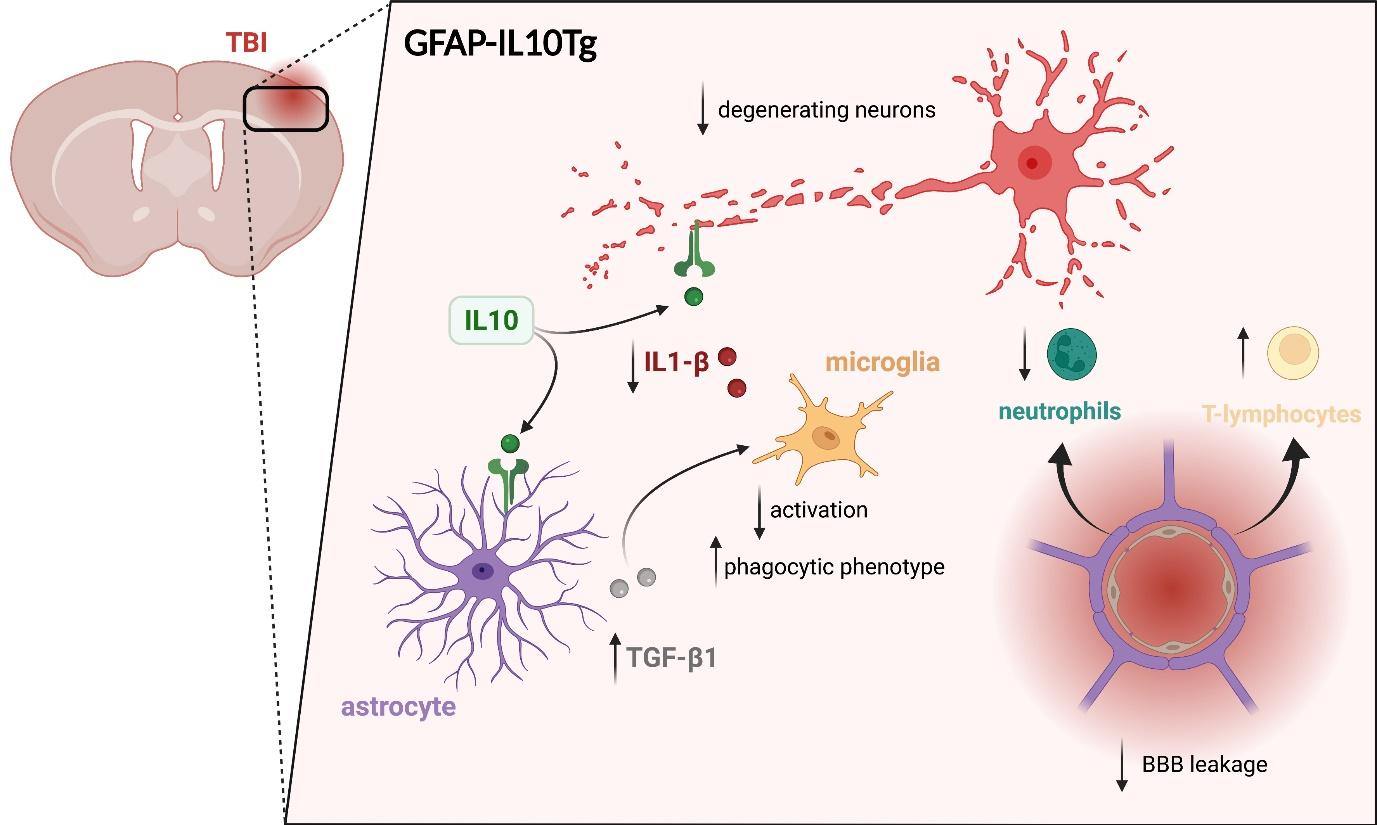Articles
Article Tools
Stats or Metrics
Article
Original Article
Exp Neurobiol 2022; 31(3): 173-195
Published online June 30, 2022
https://doi.org/10.5607/en21035
© The Korean Society for Brain and Neural Sciences
Astrocyte-targeted Overproduction of IL-10 Reduces Neurodegeneration after TBI
Mahsa Shanaki-Bavarsad1,2, Beatriz Almolda1,2*, Berta González1,2 and Bernardo Castellano1,2
1Institute of Neurosciences, Universitat Autònoma de Barcelona, 2Department of Cell Biology, Physiology and Immunology, Universitat Autònoma de Barcelona, Bellaterra, 08193 Barcelona, Spain
Correspondence to: *To whom correspondence should be addressed.
TEL: 34935811826, FAX: 34935812392
e-mail: beatriz.almolda@uab.cat
This is an Open Access article distributed under the terms of the Creative Commons Attribution Non-Commercial License (http://creativecommons.org/licenses/by-nc/4.0) which permits unrestricted non-commercial use, distribution, and reproduction in any medium, provided the original work is properly cited.
Abstract
Traumatic brain injury is the greatest cause of disability and death in young adults in the developed world. The outcome for a TBI patient is determined by the severity of the injury, not only from the initial insult but, especially, as a product of the secondary injury. It is proposed that this secondary injury is directly linked to neuro-inflammation, with the production of pro-inflammatory mediators, activation of resident glial cells and infiltration of peripheral immune cells. In this context, anti-inflammatory treatments are one of the most promising therapies to dampen the inflammatory response associated with TBI and to reduce secondary injury. In this sense, the main objective of the present study is to elucidate the effect of local production of IL-10 in the neurological outcome after TBI. For this purpose, a cryogenic lesion was caused in transgenic animals overproducing IL-10 under the GFAP promoter on astrocytes (GFAP-IL10Tg mice) and the neuro-protection, microglial activation and leukocyte recruitment were evaluated. Our results showed a protective effect of IL-10 on neurons at early time-points after TBI, in correlation with a shift in the microglial activation profile towards a down-regulating phenotype and lower production of pro-inflammatory cytokines. Concomitantly, we observed a reduction in the BBB leakage together with modifications in leukocyte infiltration into the affected area. In conclusion, local IL-10 production modifies the neuro-inflammatory response after TBI, shifting it to anti-inflammatory and neuro-protective conditions. These results point to IL-10 as a promising candidate to improve neuro-inflammation associated with TBI.
Graphical Abstract

Keywords: Microglia, Neuro-inflammatory response, Leukocytes, Neuro-degeneration, IL-10R, Cytokines


